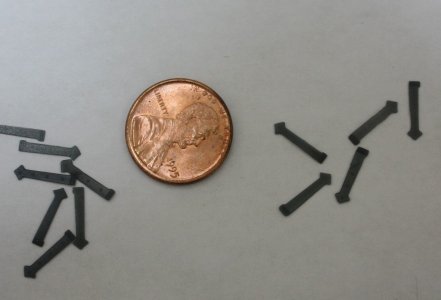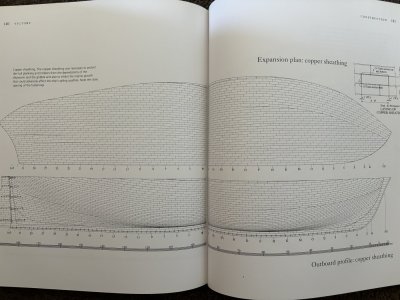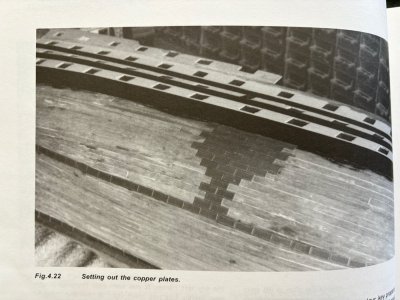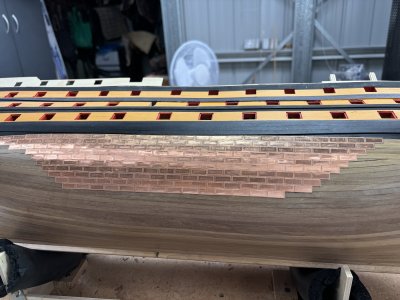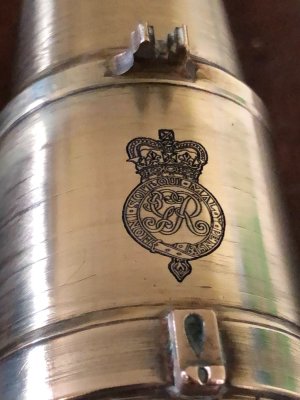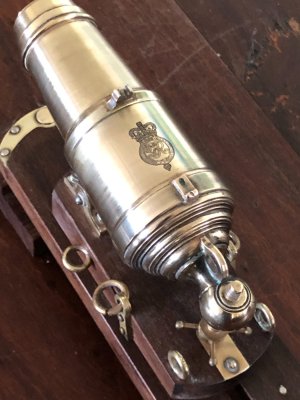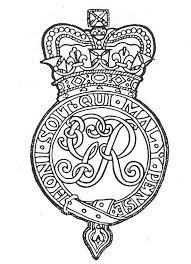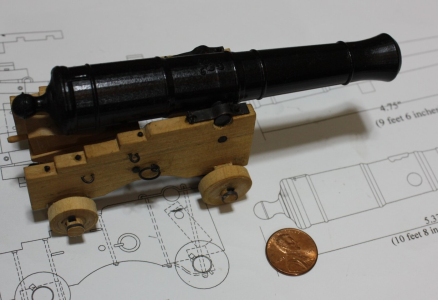Thank you all (
Byrian, Uwe, Grant, Allan, Paul, Mike and Günter). Your English is just fine
Günter. I understand perfectly and best of luck with your Victory. Have you a Build Log?
Allan, thanks again for your comments regarding the wales. As I said before, this is not something I had allowed for (as the instructions do not allude to the rabbett allowing for the wales thickness). It is a good point however and something which builders of any ship should be aware of not just Victory.
On another issue
Allan, as you know, I have used your cannon STL files to have 70 gun barrels created by a 3D printing service, here in Australia. Well, the product has arrived and production was very fast. The product quality is excellent with correct barrel length for my 1/72 scale and in black plastic which negates the need for painting. Cost worked out (including delivery), at about A$0.82 per gun - Not expensive. Below is an image of the made barrels, along with some of the brass equivalents included in the Caldercraft kit.
View attachment 466535
You will note in the picture above, that:
- The cannon barrels have the trunnion correctly located and off centre from the centreline of the barrel
- The cascable (the ring) at the rear of the cannon is correctly located and of the required size for the breeching tackle
- There is a 'touch' hole' or vent over the breech which I wasn't aware of in the file - A bonus.
- The Royal Crest on the barrels is present (see below), but it is hard to see as it is black on black. I think I may need to 'dry brush/paint' these with a grey to highlight them.
View attachment 466536
However, a problem - You can see in the picture, that the 3D building of plastic resin along and around the barrels has left a 'rippling' as it builds up the cannon. You only see it when you are 'up close' so it may not be such a problem as is obvious in the above image. Also, the plastic is relatively shiny, and definately not a matt finish. I am going to have to deal with these issues somehow.
One thing I have tried and it seems effective, is to spay the barrel with a matt varnish finish. I have used Testors spray matt finish and it appears to infill the rippling 'lows' and evens out the surface, as well as reduces the shininess to be a matt appearance. This may be my answer. I certainly could not sand or try and remove the rippling as it would destroy the detail of the crest and the ring reinforcing etc.
This barrel production was always ever an experiment, and thanks to
Allan, I have been able to carry it through without too much expense. The 3D printing has produced an enhanced and more detailed product, but with the downside of the 'rippling' surface appearance. I still have the kit-provided brass barrels which will have:
- To have the trunnions added
- No Royal Crest
- No cascable at the breech
- No blacking so would need some brass blackening treatment
So if I can hide the rippling, the made 3D barrels will be superior. Many thanks again
Allan.
Best Regards,
PeterG

